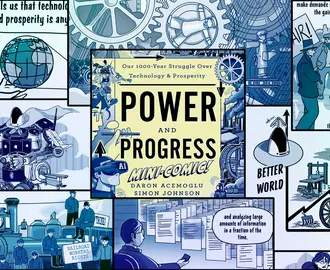Credit: iStock.com/roberuto
Economics
Economists rebuke Trump administration fuel economy standard analysis
In August 2012, President Barack Obama announced a new rule that would push fuel economy standards to nearly 55 miles per gallon by 2025. He declared this, “the single most important step we’ve ever taken to reduce our dependence on foreign oil.” The Environmental Protection Agency reassessed the standards in 2016, found them technologically feasible, and noted that they would create $90 billion of net benefits.
The Trump administration arrived at a different conclusion. A second analysis, released in July of 2018, instead predicts $176.6 billion of net costs and proposes freezing the Obama-era guidelines at their 2020 level.
Billions of dollars in benefits predicted by Obama administration under current rules.
Given both positions can’t be true, MIT Sloan’s Christopher Knittel and ten fellow economists reviewed the model underlying this recent analysis. The findings, published in “Science,” were unambiguous: The 2018 assessment “has fundamental flaws and inconsistencies, is at odds with basic economic theory and empirical studies, is misleading, and does not improve estimates of costs and benefits of fuel economy standards beyond those in the 2016 analysis,” they write. Though they acknowledge that the 2016 model is far from perfect, Knittel and his colleagues describe a series of glaring errors in the new model that distort potential costs and benefits.
First, the Trump administration’s study doubles the strength of the “rebound effect,” which predicts that consumers will drive more miles if they own a more efficient car; more miles driven will, in turn, lead to greater costs from traffic injuries and deaths. While the rebound effect is empirically proven, the decision to double its strength has no justification in the research literature. The associated costs are thus artificially inflated, the authors argue.
Second, the study ignores the global impact of carbon emissions, constraining its view to the U.S. This difference reduces the social cost of carbon — the economic harm caused by emitting a ton of carbon dioxide — from $48 per ton globally to only $7 per ton nationally. In the bigger picture, this reduces the benefits of tighter fuel standards from $27.8 billion in the 2016 assessment to $4.3 billion in 2018.
Billions of dollars in costs predicted by Trump administration under current rules.
“And let’s not forget that a big chunk of the world’s costs are being borne by our allies,” Knittel said. “Even if you only cared about the U.S., the broader interpretation of that implies we should care about our allies, and these emissions have a direct impact on them.”
Third: The case of six million missing cars. Fundamental economics predict that tighter standards generally make new and used vehicles more expensive. As a consequence, people buy fewer cars and the total fleet size decreases over time. A rollback of fuel standards, on the other hand, increases vehicle demand and fleet size. The 2018 proposal, though, forecasts that rolling back standards would decrease fleet size by six million vehicles. “This is inconsistent with basic economic principles,” Knittel and his colleagues write, and it leads the Trump administration to misleadingly claim more than $90 billion of cost savings.
This policy has obvious environmental implications. The U.S. transportation sector is now the single largest emitter of greenhouse gases in the country and tailpipe emissions contribute to local air pollution. But there are competitive concerns, as well.
Nationally, “a lot of manufacturers have invested in technology that improves fuel economy, and all of a sudden that’s a lot less valuable,” Knittel said. In essence, freezing the standards penalizes innovation. (A recent article in “The New York Times” says that these changes, which were supported by the oil industry, actually went further than automakers would like.) More broadly, reducing the pressure to increase fuel economy could hobble international competitiveness. “The U.S. has the weakest fuel economy standards in the world,” Knittel said. And though GM and Ford are global companies that look beyond U.S. regulation, “changes to our fuel economy standards that create, on the margin, less incentive to invest in fuel economy means our companies are potentially put at disadvantage on the global front.”



